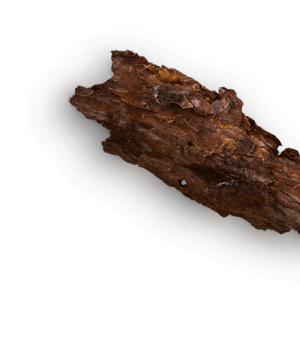T'Sou-ke First Nation: Solar powered
This small community is an emerging leader in renewable and green energy.

Instructions
What you'll need
- "T'Sou-ke First Nation: solar powered" worksheet
- Get things rolling by asking students what they do at school to help the environment:
- What does our school recycle? How does that help the environment?
- Why do we turn off lights when we leave a room?
- How does it help the environment when we use less paper?
- Introduce the word sustainability as acting in a way that helps the environment for future generations.
- Have students read the statements from the video on their "T'Sou-ke First Nation: solar powered" worksheet and complete the second column.
- Now watch the video, stopping at each statement to let students turn to a partner and discuss what it means:
- "What we are doing is something that I believe we all should be doing. We all should take care of Mother Earth." (0:19)
- "If we take care of the Earth, it will be able to provide for our future generations." (0:28)
- "It’s very important to integrate culture because we are First Nations." (1:03)
- "We use fish that our members catch. It’s all sustainable." (2:34)
- Recap the video’s message about the cultural importance of the environment and the T’Sou-ke First Nation’s strong relationship with nature. Ask students how they are connected to the environment. How do they depend on the natural world? The video talks about some of the benefits of solar energy for the T’Sou-ke First Nation :
- By using solar energy, they are helping the environment
- Thinking of future generations is acting in a sustainable way
- Using renewable energy helps look after the Earth by reducing the impact on the climate
- The T’Sou-ke community is saving money on electricity bills
- Play the video a second time and students can fill in the third column of their worksheet.
- Write "sustainable", "energy" and "Earth" on the board. With a partner, students brainstorm how the words are connected.
- What do these words mean?
- How can the words be connected?
- What do they have in common?
- Can you make a single sentence using all three words?
- Ask students to think of one word that represents what they learned from the video. Have students take turns calling out their word.
Modify or extend this activity
- Contact your school district's Indigenous Education team for resources about Indigenous connection to the environment and to invite an elder from a local First Nations community to visit your classroom.
Curriculum Fit
Grade 6 Social Studies
Content
- Economic policies and resource management, including effects on indigenous peoples
Curricular competencies
- Differentiate between short- and long-term causes, and intended and unintended consequences, of events, decisions, or developments (cause and consequence)
- Take stakeholders’ perspectives on issues, developments, or events by making inferences about their beliefs, values, and motivations (perspective)
Grade 7 Social Studies
Content
- Human responses to particular geographic challenges and opportunities, including climates, landforms, and natural resources
Curricular competencies
- Explain different perspectives on past or present people, places, issues, or events, and compare the values, worldviews, and beliefs of human cultures and societies in different times and places (perspective)
Grade 7 Science
Content
- Electricity can be generated in different ways with different environmental impacts
- Local First Nations knowledge of climate change
Curricular competencies
Processing and analyzing data and information
- Apply Indigenous perspectives and knowledge, other ways of knowing, and local knowledge as sources of information
Assessments
- Note student engagement as they watch the video and discuss how the T’Sou-ke Nation use natural resources in a sustainable way. Record anecdotal comments, take a picture or video clip for an electronic portfolio or make a comment on the student worksheet.
- Review the worksheets to assess the degree to which students’ thinking was informed by watching/discussing the video.
Teaching Notes
Solar energy
The Sun is the Earth’s main source of energy and can be captured in forms that we can use. The two main forms of solar energy are photovoltaic (electricity) and thermal (heat). Solar energy is considered one of the cleanest and most renewable sources of energy.
Solar photovoltaic is the form of energy created by converting the Sun’s rays to electricity. Solar panels, each containing a number of small cells made from silicon, create an electric current when the sunlight hits the solar cells. The electricity is delivered to homes and businesses in the T’Sou-ke community. Solar thermal technology is used to heat water. It also powers solar cooling systems.
The solar energy project demonstrates the relationship between the T’Sou-ke First Nation and the environment. Using the sun’s renewable energy reflects their values of sustainability and stewardship. We hear this in the message at the beginning of the video: “…and we all should take care of Mother Earth before we can ensure a healthy community and if we do that Mother Earth will be able to provide for us for our future generations.”






